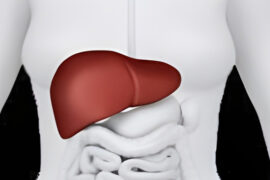Researchers worldwide are actively seeking tangible insights into the inner workings of the human mind during decision-making processes. They aim to unlock the secrets of the mind by monitoring subtle bodily signals. Notably, a team of researchers at Tohoku University, led by Kazumichi Matsumiya and Shota Furukawa from the Graduate School of Information Sciences, made significant progress in this endeavor. Their findings, published in the journal Communications Biology, reveal a surprising relationship between eye movements and specific types of decision-making.
This research aimed to challenge the long-held assumption that motor movements, such as eye or hand motions, remain unaffected by decision-making processes when they are not directly linked to the decision at hand. To investigate this, participants were instructed to move their eyes and right hand toward targets that were unrelated to an ongoing perceptual decision-making task. Initially, participants engaged in a separate task involving deciding and reporting the direction of movement of a briefly presented visual stimulus—a perceptual decision-making task. Subsequently, they performed a task where their eye and hand movements had no direct relevance to their decision-making. By comparing the results of these two tasks, the research team successfully identified and measured the impact of decision-making on eye and hand movements unrelated to the decisions themselves.
“Our work has revealed that eye movements that are not related to the visual requirements for decision-making are nevertheless affected by the process of making decisions,” states Matsumiya. Previous research in the field has analyzed how eye and hand movements affect decision-making but did not look at the issue from the other direction to investigate if decision-making affects eye and hand movements.
The implications of this research are far-reaching. It has the potential to advance both fundamental scientific inquiry into the workings of the human mind and practical applications in various fields. One key application is the development of novel technologies that can indirectly monitor when individuals are engaged in decision-making processes, even in the absence of overt physical movements. This could prove invaluable in areas such as mental health care, dementia care, and crime prevention, where assessing attentiveness during critical decision-making moments is crucial.
“We found that perceptual decision-making interfered with unrelated eye movements but not hand movements,” Matsumiya states. “This demonstrates that nerve signals involved in making decisions continuously flow into the oculomotor eye-movement system, even when multiple motor actions are irrelevant to the decision-making,” he attaches.
Tohoku University’s groundbreaking research sheds light on the intricate relationship between eye movements and decision-making, challenging previous assumptions. Beyond its theoretical contributions, this research has promising practical implications for fields that rely on monitoring cognitive processes and attentiveness during important decision-making tasks.
Disclaimer:
The information contained in this article is for educational and informational purposes only and is not intended as a health advice. We would ask you to consult a qualified professional or medical expert to gain additional knowledge before you choose to consume any product or perform any exercise.







